69+ Autism Statistics: How Many People Have Autism?
In 2023, the CDC reported that around 1 in 36 children in the U.S. is diagnosed with an autism spectrum disorder (ASD).

Key Autism Statistics & Facts
- According to the CDC, around 1% of the world’s population has autism spectrum disorder – over 75,000,000 people.
- In 2022, 1 in every 100 children are diagnosed with autism spectrum disorder.
- In 2023, the CDC reported that around 1 in 36 children in the U.S. is diagnosed with autism.
- Autism prevalence has increased 178% since 2000.
- The country with the highest rate of diagnosed autism in the world is Qatar, and the country with the lowest rate is France.
- About 4 times as many boys are diagnosed with autism as girls.
- The rate of autism in the U.S. went from 1 in 150 in 2000 to 1 in 100 in 2022.
- The state with the highest rate of diagnosed autism is Florida.
- The state with the lowest rate of diagnosed autism is Texas.
- Over the last ten years, approximately 707,000 to 1,116,000 teens (70,700 to 111,600 every year) will enter adulthood and age out of school based autism services.
- About 75% of autistic adults are not employed, but that number rises to 85% for autistic adults who have received a degree.
- Around 40% of autistic children are nonverbal, so finding nonverbal methods of communication is crucial.
- Around 78% of autistic children have another mental health condition, with more than one-fourth of autistic children also having ADHD.
- Around 80% of autistic children also experience some delay in their motor skills, like walking or holding a pencil to write.
- Almost 50% of 25-year-olds with autism have never held a paying job.
- The cost of caring for Americans diagnosed with autism had reached $268 billion in 2015 and could increase to $461 billion by 2025.
- Most of autism’s costs in the U.S. are for adult services. Specifically, around $175 to $196 billion per year for adults and $61 to $66 billion per year for children.
- Medical expenditures for children and adolescents with autism were 4.1 to 6.2 times greater than for those without autism, on average.
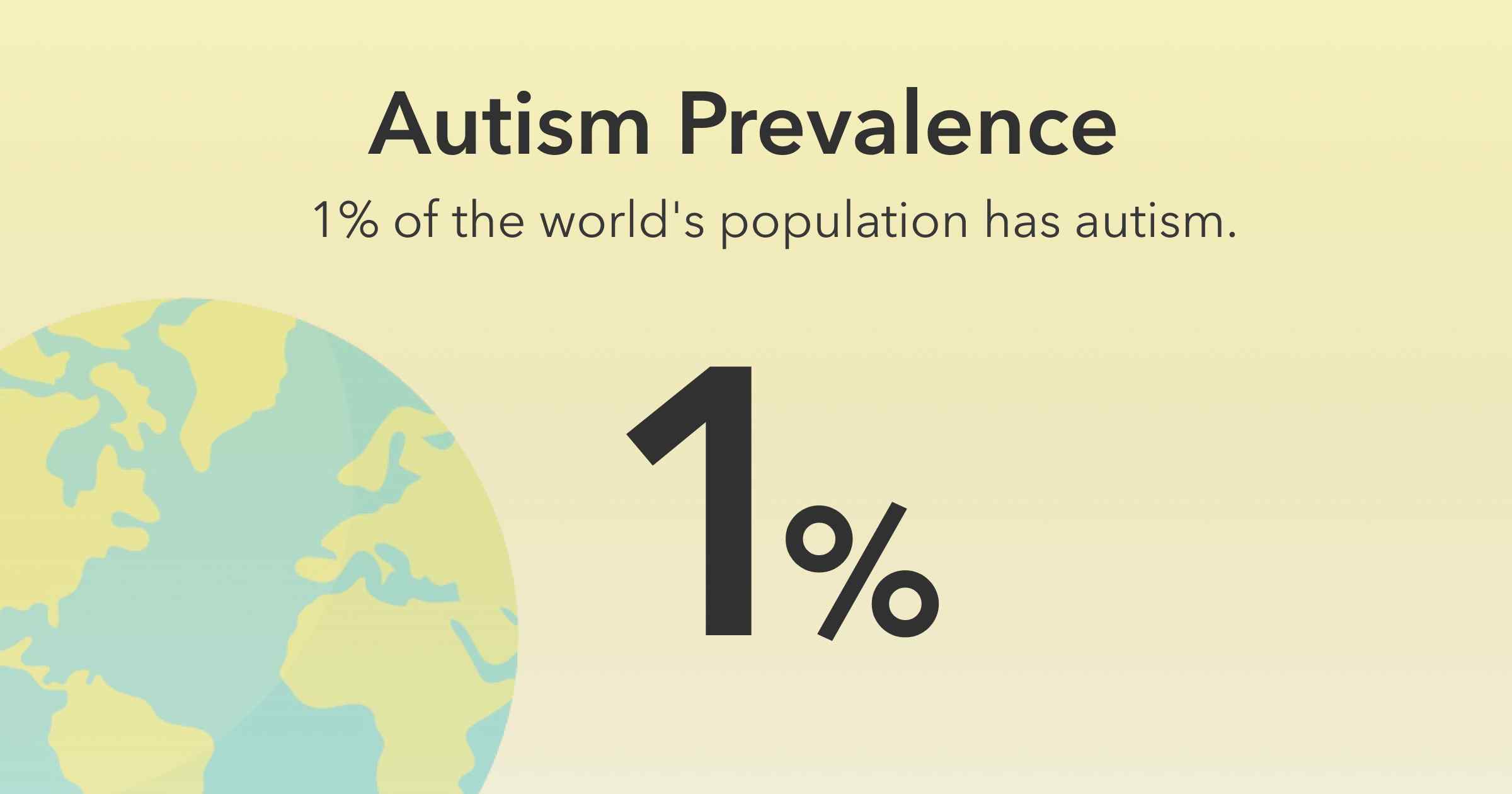
Chapter 1: Autism Prevalence Statistics
ADDM Network 2000-2018 Combining Data from All Sites
CDC Autism Prevalence
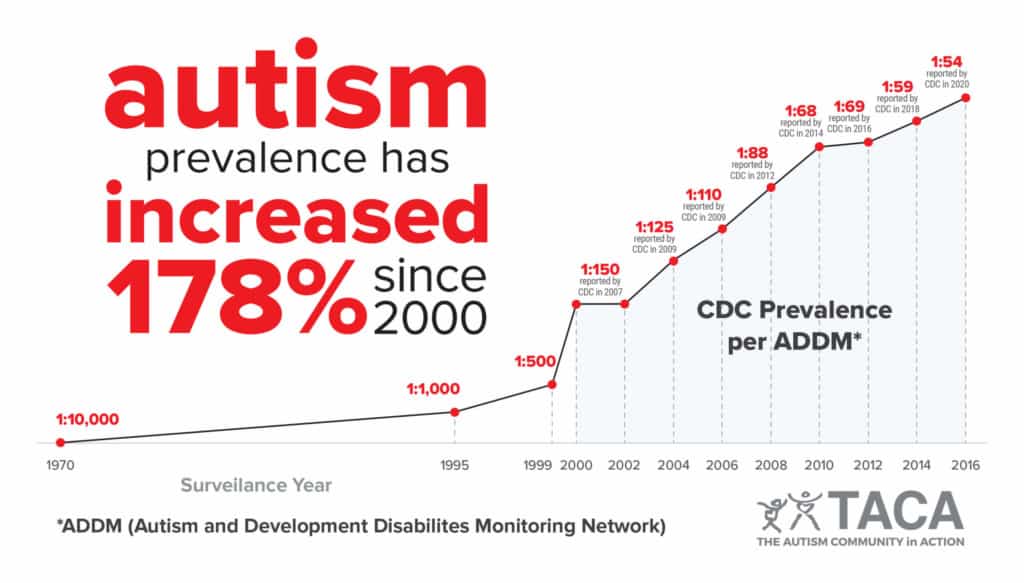
- The CDC states that around 1 in 100 children will be diagnosed with autism spectrum disorder over the course of their lives.
- The CDC states that boys are 4 times more likely to be diagnosed with autism than girls.
- The CDC states that about 17% of children between 3 and 17 years old will be diagnosed with developmental disabilities like autism, blindness, ADHD, and cerebral palsy.
- The CDC states that autism occurs across all socioeconomic, ethnic, and racial groups.
-
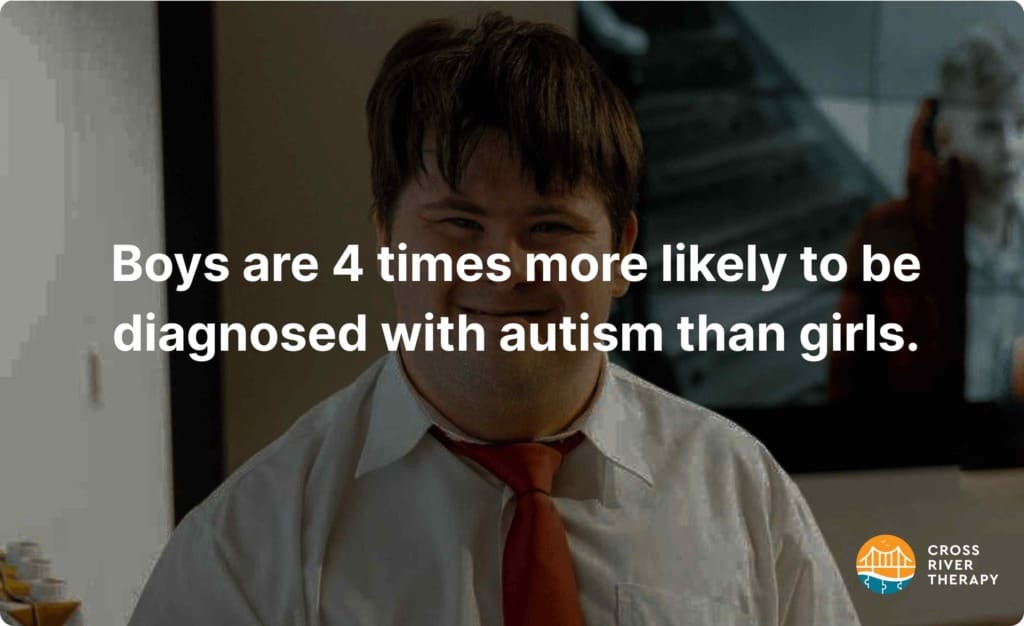
The CDC keeps track of autism in the U.S. They have published data regarding the evolving research on autism diagnoses, as well as analyzed different research papers.
In addition to tracking the rates of autism throughout the country, the CDC also works to improve their resources for autistic people. Their work has helped people from ethnic minorities to receive more equivalent care when it comes to autism diagnoses.
The CDC has also fully debunked claims that vaccines increase a child’s potential of developing autism.
Read More - How Many People Have Autism?
Autism Rates by Year
- In 2000, the CDC reported that about 6.7 out of every 1,000 children were diagnosed with autism, making the prevalence about 1 in 150.
- In 2004, diagnoses of autism were given to 8 out of every 1,000 children, for a prevalence of about 1 in 125.
- In 2006, autism diagnoses were given to about 1 out of every 110 children; in 2008, that number jumped to 1 out of every 88 children.
- In 2010, the number of autism diagnoses given to children was about 1 in 68.
- By 2018, the number of diagnoses given to children had risen to about 1 in 44, or 23 out of every 1,000 children. That’s almost 4 times the rate in 2000.
Autism spectrum disorders have become more likely to be diagnosed as more is learned about them. In addition, more girls have been diagnosed as diagnostic criteria catches up to the science.
In the 1970s, the criteria for an autism diagnosis was very strict. As the criteria was relaxed in subsequent decades, the number of diagnoses rose sharply.
Public education and access also play a role in the increase in diagnoses. Many autistic people would fly “under the radar” in the past. But today, they are able to access the support and knowledge that they need to manage their struggles.
A common myth is that vaccines make a child more likely to develop autism. Not only has this myth been debunked, but the scientist who popularized it was shown to have falsified data. In fact, his license was revoked because of this.
Autism Rates Over the Last 50 Years
- In the 1960s and 1970s, researchers estimated that autism spectrum disorder was found in anywhere from 2 to 4 children per 10,000.
- Autism’s diagnostic criteria expanded throughout the 1980s and 1990s, which led to a much higher rate of diagnosis.
- About 230 out of every 10,000 children in 2018 were diagnosed with autism.
- In comparison to the 1970s, there are 50 to 100 times more autism cases diagnosed in the 2020s.
Autism was first described as a condition in the 1940s. But it wasn’t until the 1960s that diagnostic criteria began to be codified. In the 1980s, an understanding of autism caused diagnoses to become much more widespread.
In the past, there were other conditions diagnosed separately from autism. One example would be Asperger’s syndrome. This was considered a “less severe” form of autism because it did not involve speech delays.
However, the most recent version of the DSM has put all these diagnoses together into autism spectrum disorder. That may increase the rate of diagnosis, as people who would have been diagnosed with Asperger’s in the past are diagnosed with autism today.
Autism Rates by State

- The three states with the highest prevalence of autism diagnoses are Rhode Island, Maryland, and Florida, all with rates of over 4%.
- The majority of states have autism diagnosis rates between 2% and 3.9%.
- 10 states have an autism diagnosis prevalence of less than 2%.
- The lowest rate of diagnosed autism is in Texas at 1.54%, while the highest rate is in Florida at 4.88%.
Autism rates fluctuate throughout the U.S. There isn’t a lot of conclusive data on why this is. It’s possible that states like Florida have more effective screening processes and special education interventions.
If you live in a state with a lower rate of diagnosis, it doesn’t mean that fewer people in your area are autistic.
It might just mean that fewer people are diagnosed, either because they don’t have harmful symptoms or because they lack access to get a diagnosis.
Autism Rates by Country

- Most countries have diagnosed autism rates of between 60 and 100 for every 10,000 children.
- The country with the lowest diagnosed autism rate in the world is France, with about 1 in 144 children being diagnosed.
- There are just five countries with an autism rate that is higher than 100 out of every 10,000 children.
- Countries with the least diagnosed autism are mostly in Europe, while countries with the most diagnosed autism are mostly in the West Asian region.
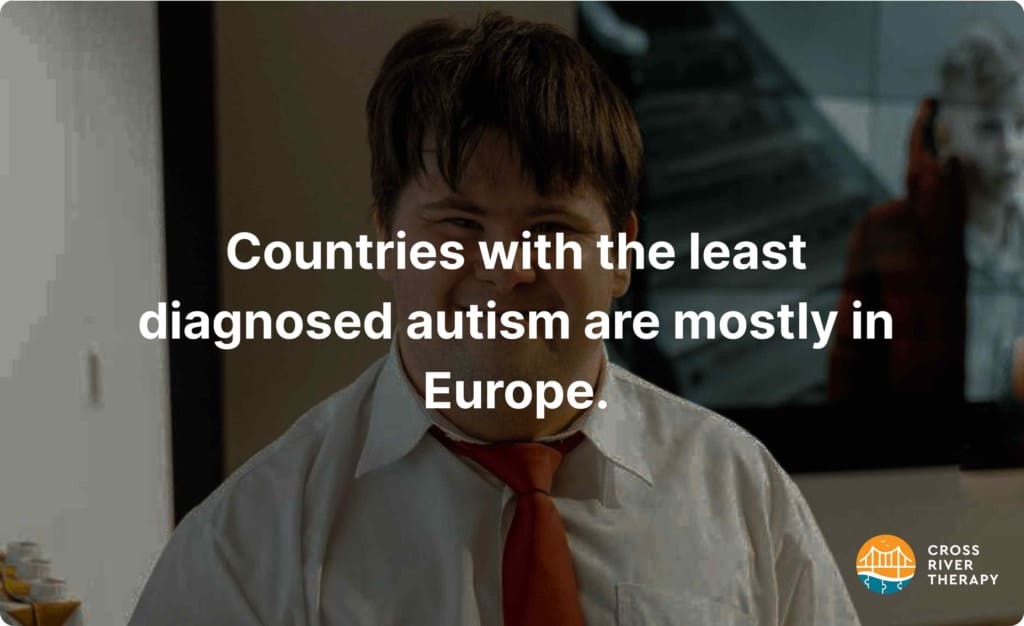
Globally, the rate of autism in the population tends to be between 60 and 100 children diagnosed per 10,000.
The average for all the countries combined is about 83.2 children diagnosed for every 10,000. About 43 countries in total have an average diagnostic rate that is lower than average.
Only five countries in the world have an autism diagnosis rate of more than 100 children for every 10,000, or a rate higher than 1%. Most of these are located in West Asia and North Africa, which Americans often call the Middle East.
Countries with Highest Autism Rates
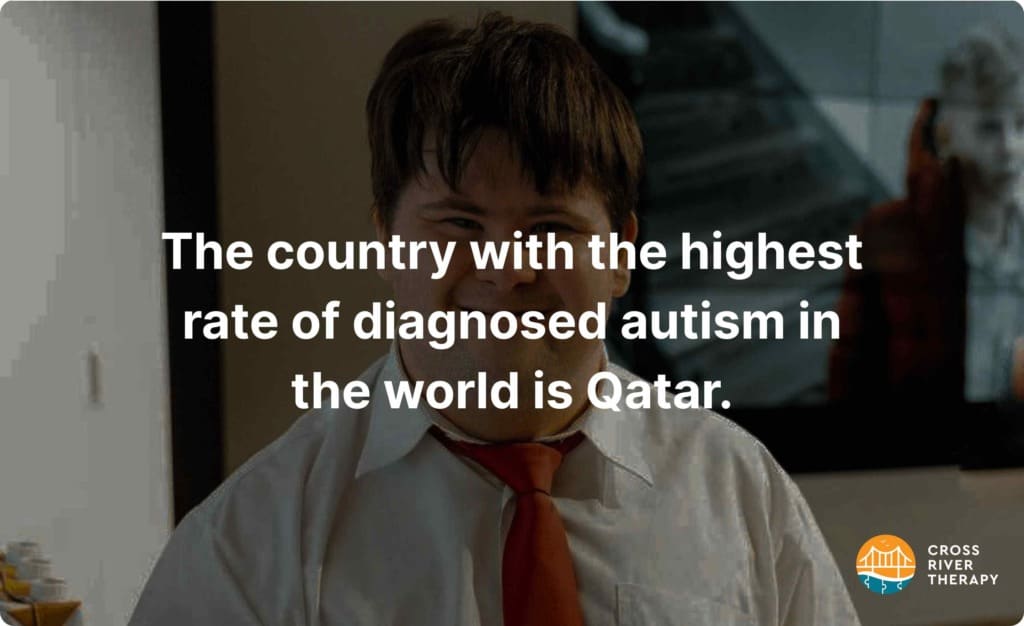
- The country with the highest rate of diagnosed autism in the world is Qatar, with about 1 in 66 people being diagnosed.
- About 151 people per 10,000 in Qatar are diagnosed with autism, followed by 112 people per 10,000 in the United Arab Emirates.
- Oman, Bahrain, and Saudi Arabia all have rates higher than 100 people per 10,000, at 107, 103, and 101 respectively.
- The next five countries with the highest rate of diagnosed autism are Kuwait, Jordan, Syria, Afghanistan, and Palestine.
Countries with Lowest Autism Rates
- The lowest rate of diagnosed autism is in France, with about 69 out of every 10,000 children being diagnosed.
- About 1 out of every 144 children in France is given an autism diagnosis, followed by 1 out of every 142 children in Portugal.
- About 1 out of every 139 children is given an autism diagnosis in Iceland, Norway, Germany, and Italy.
- The next four countries with the lowest rates of diagnosed autism are Greece, Austria, Belgium, and Spain.
Chapter 2: Autism Demographics
Autism Rates by Gender
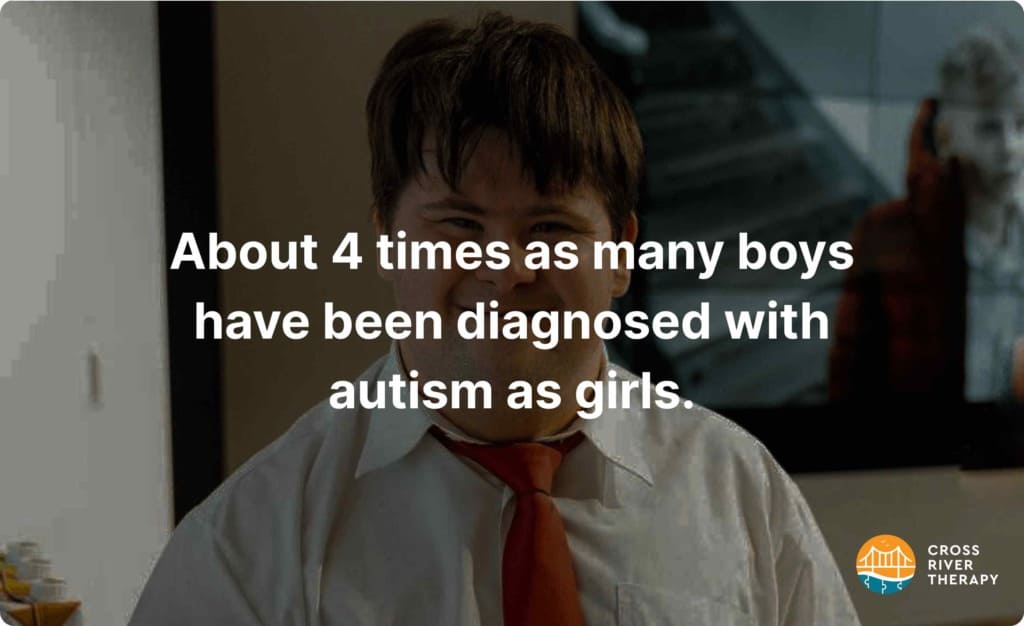
- About 4 times as many boys have been diagnosed with autism as girls.
- Research shows that girls are underdiagnosed, meaning that the ratio of boys to girls with autism might actually be just 1 to 2.
- In one study, the ratio fell from 4.2 to 3.3 boys for every girl when researchers changed how they evaluated whether the participants had autism.
- In 1995, a Danish study found that 8 boys were diagnosed with autism for every 1 girl, but within 15 years, the ratio had dropped to 3 boys for every 1 girl.
In the past, researchers believed that it was extremely rare for girls to have autism. But more recent studies have shown that there may be 1 girl with autism for every 2 or 3 boys. The trouble is in getting a proper diagnosis.
Girls with autism are more likely to have “introverted” symptoms, which may be misdiagnosed as depression or anxiety. Because of this, girls have a higher likelihood of being diagnosed with autism in their preteens or teenage years.
But even when the under diagnosis is taken into account, it does seem that boys are more likely to be autistic than girls.
Autism Rates by Race & Ethnicity
- The CDC states that autism is prevalent across all races and ethnicities, but it is sometimes under diagnosed in certain groups.
- White children were shown to have an autism prevalence ratio of about 1.1 to Black children in 2014.
- In 2014, white children were shown to have an autism prevalence ratio of about 1.2 to Hispanic or Latino children.
- In 2006, the prevalence ratio of autism in white children versus Hispanic or Latino children was 1.7, significantly higher than the 2014 rate.
The CDC says that the high prevalence ratios of autism in white children when compared to other ethnicities are not actually because white children are more likely to have autism.
As outreach to other ethnicities has improved, the prevalence of diagnoses across groups has become much more even.
There doesn’t seem to be any indication that white children are more likely to develop autism than other children.
But studies indicate that Black and Latino children are more likely to be diagnosed with behavioral problems requiring discipline than with autism.
Autism Rates by Age
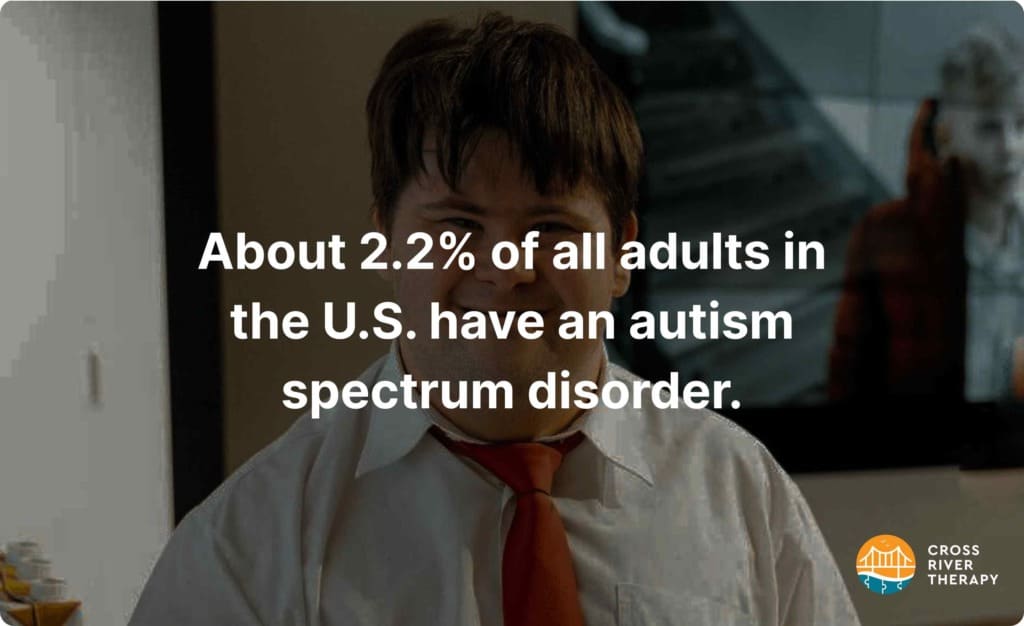
- Estimates show that about 2.2% of all adults in the U.S. have an autism spectrum disorder.
- Autism rates are usually calculated based on children, with most diagnoses being given to children.
- Autism screenings are recommended for children when they reach 18 and 24 months old, as autism diagnoses are fairly reliable by age 2.
- The average parent will discuss concerns about their child’s development with their primary care pediatrician when they are a little over 2 years old.
-
While autism is usually diagnosed in childhood, this isn’t always the case. Adults are often screened for autism when their symptoms have been mild enough to avoid causing problems at home or in school.
Some autistic people are given a diagnosis as early as 14 months old. It is recommended by the CDC that pediatricians screen children for autism at both 18 months and 24 months. By the age of two, children can typically be given a reliable autism diagnosis.
With verbal autistic people, who were previously diagnosed with Asperger’s syndrome, the average age of diagnosis is between 5 and 9 years old.
However, some verbal autistic people are diagnosed as early as 3 years old.
Girls are more likely to receive a late diagnosis than boys.
Chapter 3: Autism Economic/Financial Costs
- The cost of caring for Americans with autism had reached $268 billion in 2015.
- Estimates from 2015 showed that the costs of autism-related care in the U.S. could rise to $460 billion by 2025.
- Autism economic costs are calculated based on factors like healthcare, special education, and government assistance.
- Healthcare for autism costs significantly less per person in countries like Canada and Denmark, which have universal healthcare systems.
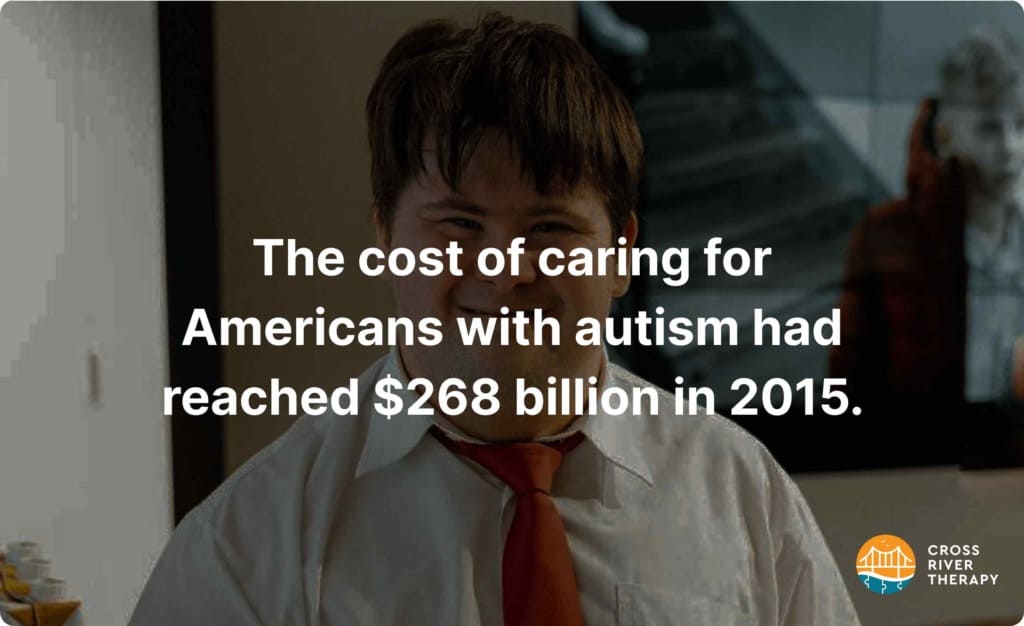
The economic impact of autism involves multiple different factors. Studies show that it costs about $60,000 per year for a parent to raise an autistic child.
This accounts for things like medical costs, prescription costs, therapists, accommodations, special education, and time taken off work.
As a general rule, the more infrastructure there is to support autistic people, the lower the cost will be for care per person.
For example, a school with a robust special education program will spend less on educating an autistic child than a school that has to create an entire program, hire new personnel, and buy resources from scratch.
Chapter 4: Autism in Adulthood
- In 2014, the CDC stated that about 1% of people globally have autism. In 2020, they stated that 2.2% of American adults have autism.
- Over 5.4 million U.S. adults have a diagnosed autism spectrum disorder.
- In 2018, about 85% of college graduates with autism were not employed.
- About 75% of adults in the U.S. who have autism are either underemployed or fully unemployed.
- About 93% of adults in the U.S. with autism stated that the COVID-19 pandemic had had a negative impact on their overall mental health.

Chapter 5: Intervention & Support
- About 11% of students in the U.S. with a disability have autism.
- Special education, early intervention, and self advocacy are the most important tools for autistic people to thrive.
- About 40% of children with autism don’t speak, so finding methods of nonverbal communication is crucial.
- Many autistic people are diagnosed and receive familial and educational support before the age of 5.
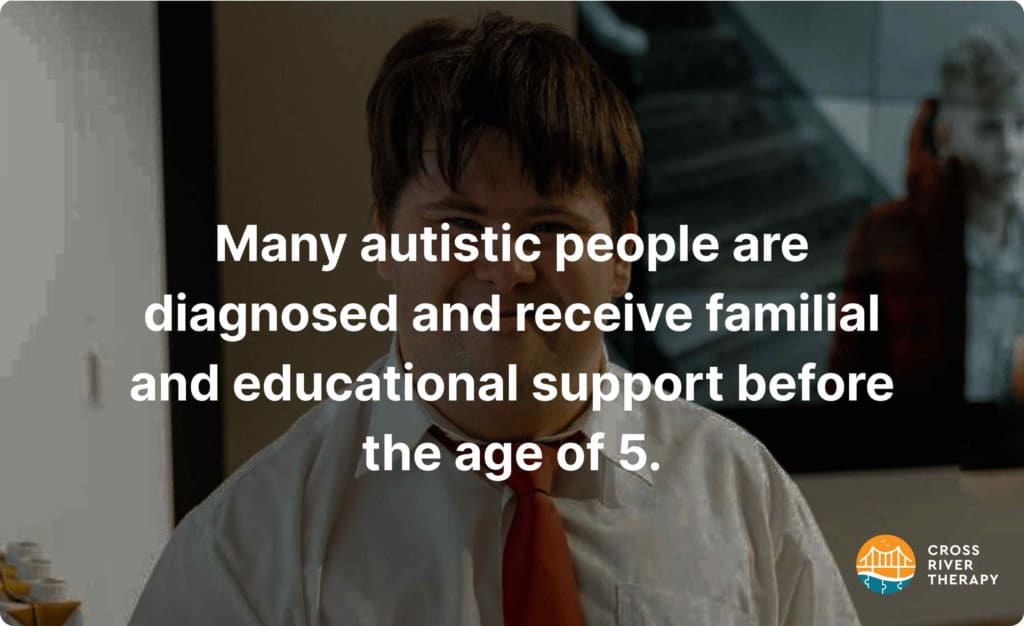
Chapter 6: Associated Challenges
- About 78% of autistic children have co-occurring mental health issues.
- About 28% of autistic children also have ADHD.
- Unemployment is a major issue for autistic adults, with 75% of the population being underemployed or unemployed.
- For autistic adults who have received a college degree, the underemployment and unemployment rate is 85%.
- Communication can be difficult for autistic children, especially since 40% are nonverbal.
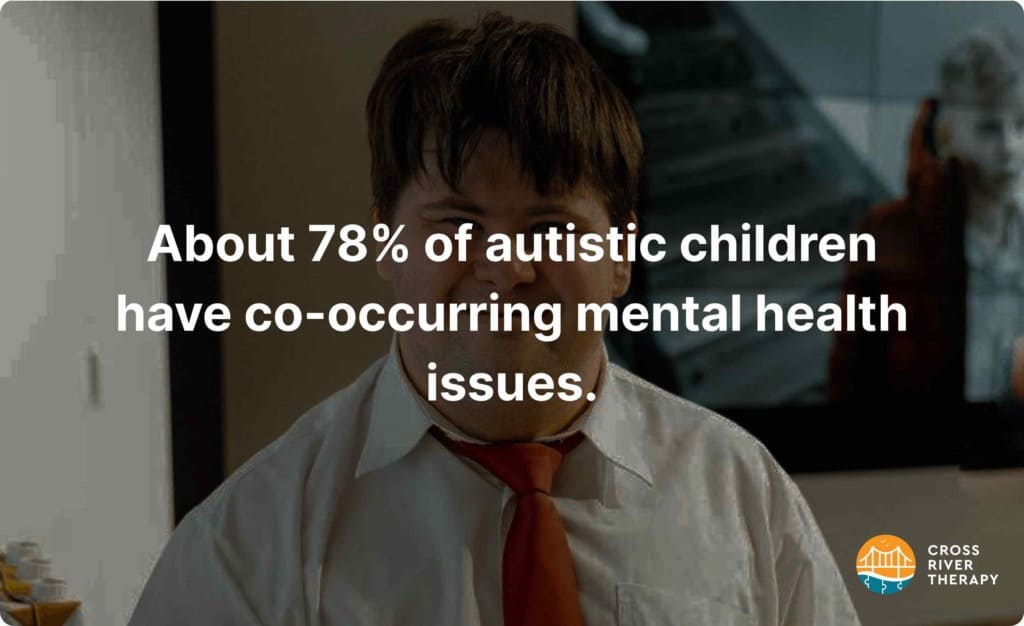
Chapter 7: Associated Medical & Mental Health Conditions
- Mental health conditions affect nearly 4 out of every 5 children with autism, with ADHD being the most common.
- Autistic people may also develop anxiety disorders like OCD, or mood regulation disorders like bipolar disorder.
- Autism is a common component of genetic disorders like Down syndrome and Fragile X syndrome.
- Autistic people may have co-occurring medical conditions including gastrointestinal issues, seizures, epilepsy, and trouble sleeping.
- Around 4 out of every 5 autistic children has some trouble with their motor skills, like walking, balancing, or writing.
-

Chapter 8: Autism Unemployment Rate
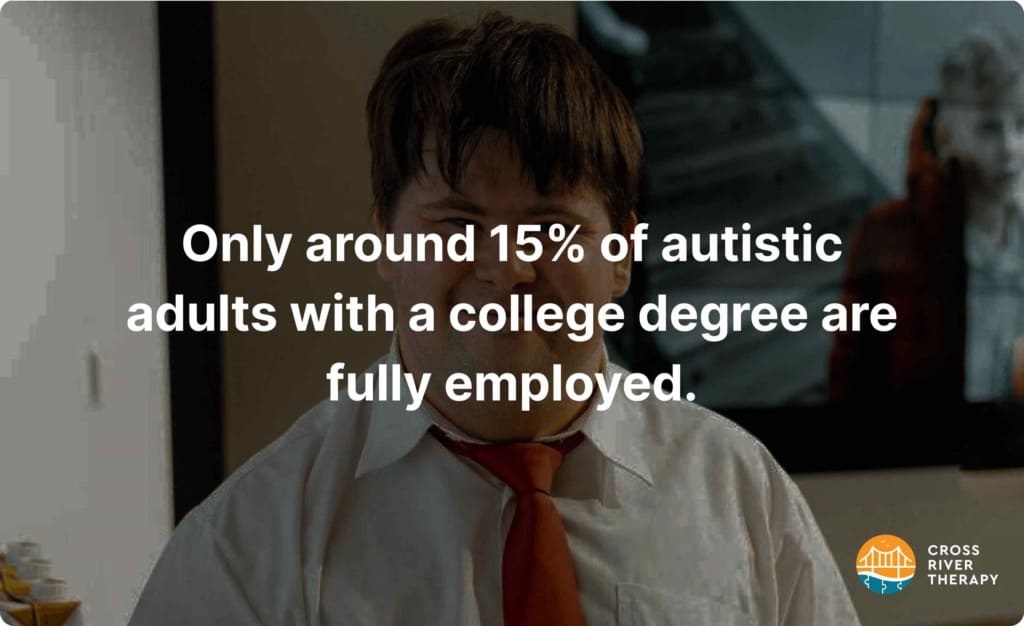
- Only around 15% of autistic adults with a college degree are fully employed.
- Only around 25% of autistic adults in general are fully employed.
- Only around 21% autistic young adults are currently or were recently employed.
- It is difficult to receive social security benefits as an autistic adult, since you have to pay into the program before you can benefit from it.
Chapter 9: Autism Marriage Statistics
- Around half of all adults with diagnosed autism reside with a member of their family.
- Old research shows that about 5% of autistic adults are married or have been married in the past.
- A study in Toronto showed that 9% of autistic adults were married, while 32% had a romantic partner. For comparison, about 50% of non-autistic adults are married.
- Researchers believe that romantic relationships should be considered when making transitional plans for autistic people from childhood to adulthood.
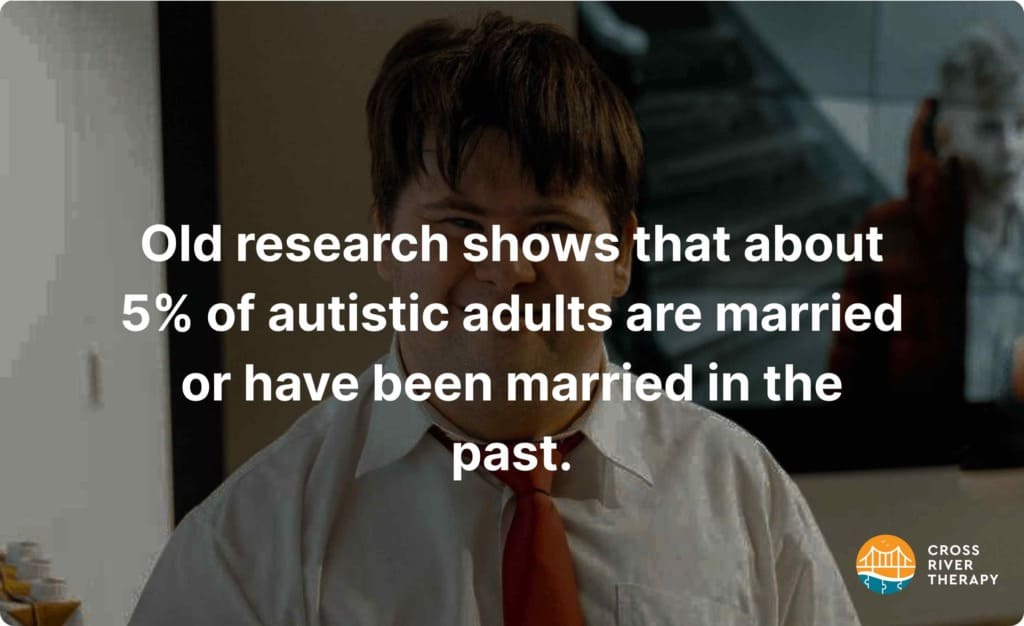
There are concerns that autistic adults may have limited independence in how they conduct their relationships.
Chapter 10: Education for People with Autism
- In the U.S., autistic students are the largest disability represented in the public classroom.
- One survey showed that about 35% of young people with autism had at least some college education.
- In the first two years after high school, about half of the autistic young adults in the U.S. were not employed or enrolled in college.
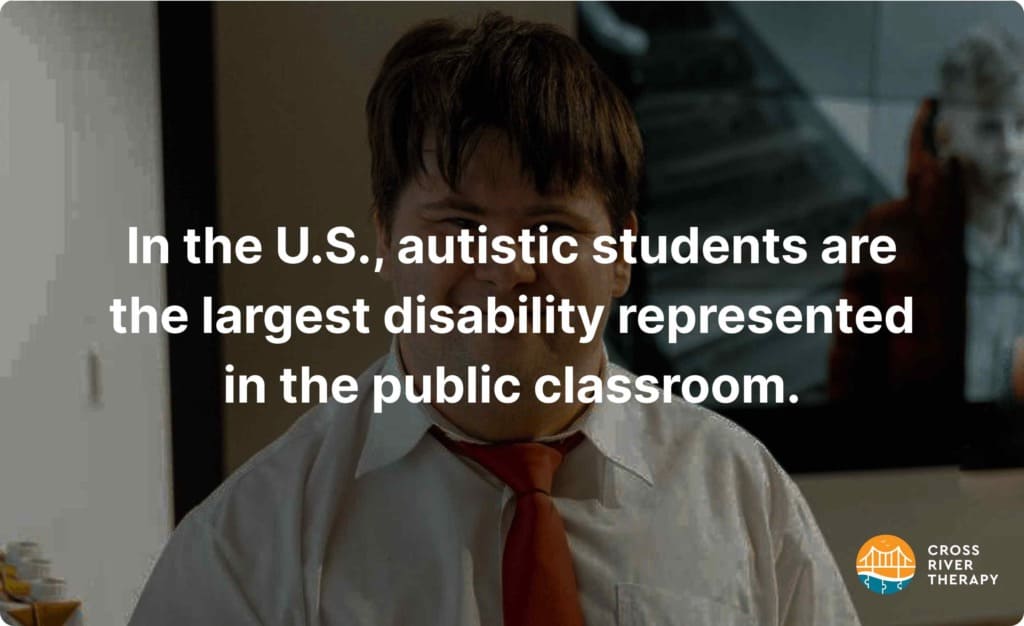
Chapter 11: What Is Autism?
- Autism spectrum disorder is the term for a developmental disability characterized by social difficulties, developmental delays, and behavioral struggles.
- Autistic people are much more sensitive to sensory input than the average non-autistic person.
- Autism spectrum disorder covers all autism-related diagnoses that used to be separate, such as Asperger’s syndrome.
- Autistic people have been shown to communicate much more effectively with other autistic people than with non-autistic individuals.
Sources
- https://onlinelibrary.wiley.com/doi/full/10.1002/aur.2696
- https://www.nimh.nih.gov/health/statistics/autism-spectrum-disorder-asd
- https://www.who.int/news-room/fact-sheets/detail/autism-spectrum-disorders
Conclusion
Autism has been present throughout all of history, but it has only begun being diagnosed over the past century. We hope these autism statistics have taught you more about autism in the world!

Have Any Questions?
Whether you're curious about our services or need support, we're just a click away. Reach out or check our FAQs for quick answers.

